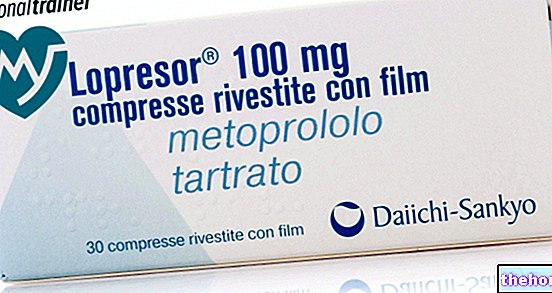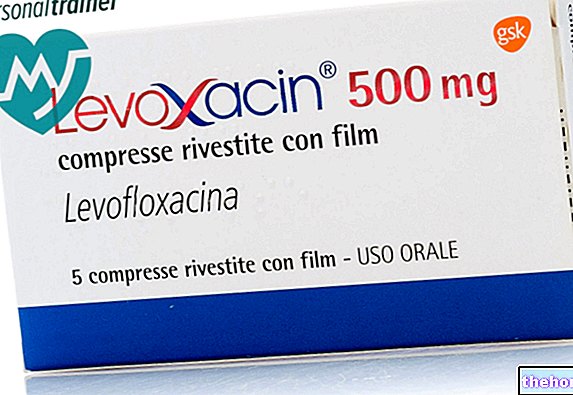Active ingredients: Nortriptyline
NORITREN 10 mg coated tablets
NORITREN 25 mg coated tablets
Why is Noritren used? What is it for?
PHARMACOTHERAPEUTIC CATEGORY
Tricyclic antidepressant
INDICATIONS
Single or recurrent episodes of major depression.
Major depressive disorder.
Contraindications When Noritren should not be used
Hypersensitivity to the active substance or to any of the excipients.
Recent myocardial infarction. Any degree of cardiac conduction block or heart rhythm disturbances and coronary insufficiency.
It is contraindicated:
- closed-angle glaucoma;
- acute poisoning by alcohol and barbiturates;
- urinary retention;
- concomitant treatment with anti-MAO (monoamine oxidase inhibitors) (see sections Special Warnings and Interactions).
Precautions for use What you need to know before you take Noritren
Cardiac arrhythmias may occur with high doses, even in patients with pre-existing disease taking a normal dose.
Nortriptyline should be used with caution in patients with seizure disorders, prostatic hypertrophy, hyperthyroidism, paranoid symptoms and advanced liver or cardiovascular disease.
Use in children and adolescents under 18 years
Tricyclic antidepressants should not be used to treat children and adolescents under 18 years. Studies conducted in depression in children of this age group have not demonstrated efficacy for this class of drugs. Studies with other antidepressants have highlighted the risk of suicide, self-harm and hostility related to these drugs. This risk may also occur with these drugs. tricyclic antidepressants.
Furthermore, tricyclic antidepressants are associated with a risk of adverse cardiovascular events in all age groups. It should be borne in mind that long-term safety data in children and adolescents regarding growth, maturation and development are not available. cognitive and behavioral
Treatment with Noritren is associated with a risk of adverse cardiovascular events in all age groups.
Great caution is required if nortriptyline is administered to hyperthyroid patients or to patients taking thyroid medications, as they can develop cardiac arrhythmias. Elderly patients are particularly sensitive to orthostatic hypotension, but nortriptyline is less likely to cause orthostatic hypotension than other tricyclic antidepressants.
In manic-depressive subjects, the transition to the manic phase may occur; nortriptyline should be discontinued if the patient enters a manic phase
In patients with the rare affection of shallow anterior chamber and closed iridocorneal angle it can cause acute glaucoma attacks due to pupil dilation.
Anesthetics administered during therapy with tricyclic antidepressants may increase the risk of arrhythmia and hypotension. Whenever possible, nortriptyline should be discontinued several days before surgery; otherwise, the anesthetist should be notified that the patient is being treated with nortriptyline.
As is known for other psychotropics, nortriptyline can modify insulin and glucose responses making it necessary to adjust antidiabetic therapy in diabetic patients. Depressive illness itself can affect patients' glycemic balance.
Interactions Which drugs or foods may change the effect of Noritren
Pharmacodynamic interactions Inform your doctor or pharmacist if you have recently taken any other medicines, even those without a prescription.
Contraindicated associations
Anti-MAO (selective reversible MAO-A inhibitor (moclobemide) and irreversible selective MAO-B inhibitor (selegiline))), to avoid the risk of developing a serotonin syndrome (see Contraindications and Special Warnings).
Associations not recommended
Sympathomimetics: Nortriptyline may potentiate the cardiovascular effects of adrenaline, ephedrine, isoprenaline, noradrenaline, phenylephrine and phenylpropanolamine (for example contained in local and general anesthetics and nasal decongestants).
Adrenergic blockers: Tricyclic antidepressants can counteract the antihypertensive effects of the following medicines: guanethidine, betanidine, reserpine, clonidine and methyldopa. It is advisable to review all antihypertensive therapy during treatment with tricyclic antidepressants.
Anticholinergics: Tricyclic antidepressants can potentiate the effects of these drugs on the eye, central nervous system, intestines and bladder. Avoid concomitant use of these drugs as they may increase the risk of developing side effects such as paralytic ileus or hyperpyrexia.
Drugs that prolong the QT interval, including antiarrhythmics such as quinidine, the antihistamines astemizole and terfenadine, some antipsychotics (particularly pimozide and sertindole), cisapride, halofentrine and sotalol, as they may increase the risk of ventricular arrhythmias when taken concomitantly with tricyclic antidepressants.
Antifungals such as fluconazole and terbinafine increase serum concentrations of tricyclics and related toxicity. Syncopes and torsades de pointes occurred.
Associations requiring precautions for use
Agents that depress the central nervous system: Nortriptyline may potentiate the sedative effects of alcohol, barbiturates and other central nervous system depressants.
Pharmacokinetic interactions
Influence of other medicinal products on the pharmacokinetics of tricyclic antidepressants
Tricyclic antidepressants, including nortriptyline, are metabolized by hepatic cytochrome P450 isoenzyme CYP2D6. CYP2D6 is polymorphic in the population and the isoenzyme can be inhibited by various psychotropic drugs and other drugs such as neuroleptics, serotonin reuptake inhibitors except c (which is a very weak inhibitor), beta-blockers and newer antiarrhythmics. These drugs can cause substantial decreases in tricyclic metabolism and marked increases in plasma concentrations.
Barbiturates and other enzyme inducers can lower plasma levels of tricyclic antidepressants and reduce the anti-depressive response.
Cimetidine, methylphenidate and calcium channel blockers increase the plasma levels of tricyclics and their related toxicity.
Tricyclic antidepressants and neuroleptics mutually inhibit their metabolism; this can lead to a lowering of the seizure threshold with consequent crisis. The dosage of these medicines may need to be adjusted.
Antifungals, such as fluconazole and terbinafine, have been observed to increase the serum levels of amitriptyline and nortriptyline.
Nortriptyline should not be administered concomitantly with anti-MAO (see Contraindications and Interactions sections).
The concomitant administration of nortriptyline and anti-MAO can cause serotonin syndrome (a set of symptoms that may include agitation, confusion, tremor, myoclonus and hyperthermia).
As with other tricyclic antidepressants, nortriptyline should not be given to patients receiving monoamine oxidase inhibitors (antiMAO). Treatment with nortriptyline can be initiated 14 days after discontinuation of irreversible non-selective MAOIs and at least one day after discontinuation of reversible moclobemide. Anti-MAO treatment can be initiated 14 days after nortriptyline discontinuation.
When nortriptyline is taken for a depressive component of schizophrenia, psychotic symptoms can be aggravated. In these cases nortriptyline should be prescribed with great caution and taken in combination with a neuroleptic, paying particular attention to drug interactions.
Hyperpyrexia has been reported with tricyclic antidepressants administered concomitantly with anticholinergics or neuroleptics, especially in hot weather.
After prolonged administration, abrupt discontinuation of therapy may cause withdrawal symptoms manifesting as headache, malaise, insomnia and irritability. These symptoms are not indicative of addiction.
Suicide / Suicidal ideation
Depression is associated with an increased risk of suicidal thoughts, self harm and suicide (suicide / related events). This risk persists until significant remission occurs. As improvements may occur during the first or immediate weeks of treatment, patients should be monitored closely until improvement occurs. It is general clinical experience that the risk of suicide may increase in the early stages of improvement.
Other psychiatric conditions for which Noritren is prescribed may also be associated with an increased risk of suicidal behavior. Furthermore, these conditions can be associated with major depressive disorder. Therefore, the same precautions followed when treating patients with other psychiatric disorders should be observed when treating patients with major depressive disorders.
Patients with a history of suicidal behavior or thoughts, or who exhibit a significant degree of suicidal ideation prior to initiation of treatment, are at increased risk of suicidal thoughts or suicidal thoughts, and should be closely monitored during treatment. of clinical trials conducted with antidepressant drugs in comparison with placebo in the therapy of psychiatric disorders, showed an increased risk of suicidal behavior in the age group below 25 years of patients treated with antidepressants compared to placebo
Drug therapy with antidepressants should always be associated with close surveillance of patients, particularly those at high risk, especially in the initial stages of treatment and after dose changes. Patients (or caregivers) should be advised of the need to monitor and report immediately to their physician any clinical worsening, the onset of suicidal behavior or thoughts, or changes in behavior.
Warnings It is important to know that:
Pregnancy and breastfeeding
Ask your doctor or pharmacist for advice before taking any medicine.
Pregnancy
Nortriptyline should not be used during pregnancy unless strictly necessary and only after a "careful risk / benefit assessment".
The use of high doses of tricyclic antidepressants during the third trimester of pregnancy may cause effects in the newborn, including neurobehavioral disorders.
In neonates, lethargy with amitriptyline and urinary retention with nortriptyline (metabolite of amitriptyline) have been reported when administered to pregnant women until delivery.
Feeding time
Since nortriptyline is excreted in low concentrations with breast milk, it is unlikely to affect the infant when taken in therapeutic doses. The dose ingested by the newborn is approximately 2% of the maternal weight-related daily dose (in mg / kg).
Breastfeeding can be continued during nortriptyline therapy if considered of clinical importance, if strictly necessary and only after a careful risk / benefit assessment, but it is recommended that the infant be observed, especially in the first 4 weeks after birth. .
Effects on ability to drive and use machines
Nortriptyline is not a particularly sedative medicine. However, because psychotropic therapy can alter the level of general attention and concentration, it is necessary to inform patients of the need to exercise caution while driving or using machines.
Important information about some of the ingredients
Noritren contains lactose and sucrose. If you have been told by your doctor that you have an intolerance to some sugars, contact your doctor before taking this medicinal product.
Dosage and method of use How to use Noritren: Dosage
It is recommended to start with a low dose and gradually increase, carefully observing the clinical response and any evidence of intolerance. Doses above 150 mg per day should preferably be limited to hospitalized patients (up to 200-250 mg).
Adults
Initially 25 or 50 mg once daily given in the morning or 25 mg 2-3 times daily, gradually increased by 25 mg every other day if needed to 100-150 mg once daily or 50 mg 2-3 times a day (rarely 200 mg a day to hospitalized patients). Additional doses are mainly given in the morning.
The maintenance dose is equal to the optimal therapeutic dose.
Elderly patients
Patients over 60 years: Initially 10 mg 2-3 times a day or 25 mg once a day, gradually increased as needed every other day up to 150 mg per day. Additional doses are mainly given in the morning.
The maintenance dose is equal to the optimal therapeutic dose.
Children and adolescents (<18 years)
Noritren is not recommended for use in children and adolescents due to a lack of data on safety and efficacy.
Reduced kidney function
Nortriptyline can be administered at the usual doses to patients with renal insufficiency.
Reduced liver function
Careful dose selection and, if possible, measurement of the drug level in the serum is advisable.
Duration of treatment
The antidepressant effect usually occurs after 2-4 weeks. Treatment with antidepressants is symptomatic and, therefore, should be continued for an appropriate period of time, usually up to 6 months after remission to prevent relapse. In patients with recurrent (unipolar) depression it may be necessary to continue maintenance therapy for a few years in order to prevent new episodes.
Suspension
When discontinuing therapy, the drug should be gradually discontinued over the course of a few weeks.
Method of administration
Dose increases should preferably be made in the morning.
The tablets should be swallowed with water.
Overdose What to do if you have taken too much Noritren
In case of accidental ingestion / intake of an excessive dose of Noritren, notify your doctor immediately or go to the nearest hospital.
Symptoms
Symptoms can occur slowly and insidiously or abruptly by surprise. In the first few hours, drowsiness or excitement, agitation and hallucinations may occur.
Anticholinergic symptoms: mydriasis, tachycardia, urinary retention, dry mucous membranes, impaired intestinal motility. Convulsions. Fever. Sudden onset of central nervous system depression. Decreased level of consciousness with progression to coma. Respiratory depression.
Cardiac symptoms: Arrhythmias (ventricular tachyarrhythmias, torsades de pointes, ventricular fibrillation). The ECG typically shows PR interval prolongation, QRS complex enlargement, QT prolongation, T wave flattening or inversion, ST segment elevation, and varying degrees of block progressing to cardiac arrest. Widening of the QRS complex usually correlates well with the severity of toxicity following acute overdose. Heart failure, hypotension, cardiogenic shock.
Metabolic acidosis, hypokalaemia.
Confusion, agitation, hallucinations and ataxia are possible during awakening.
Treatment
Hospitalization (intensive care unit). Treatment is symptomatic and supportive.
Gastric aspiration and gastric lavage also in the late phase after oral ingestion and treatment with activated charcoal.
Strict monitoring even in apparently uncomplicated cases. Observation of the level of consciousness, pulse, blood pressure and respiration. Frequent checking of serum electrolytes and blood gases. Maintain a clear airway with intubation if necessary.
Respirator treatment is recommended to prevent possible respiratory arrest.
ECG monitoring of cardiac function for 3-5 days.
Wide intervals of the QRS complex, heart failure and ventricular arrhythmias can be resolved with alkaline pH in the blood (bicarbonate or moderate hyperventilation) and rapid infusion of hypertonic sodium chloride (100-200 mmol of Na +).
Conventional anti-arrhythmics can be used, for example lidocaine in ventricular arrhythmias 50-100 mg (1 to 1.5 mg / kg) i.v., subsequently 1-3 mg / min by intravenous infusion.
If necessary, cardioversion, defibrillation.
Circulatory failure should be treated with plasma-expander and, in severe cases, with dobutamine - infusion rate initially 2-3 µg / kg / min with increasing doses depending on the response. Restlessness and convulsions can be treated with diazepam.
There is considerable individual variability in the response to overdose. Children are particularly susceptible to cardiotoxicity and seizures.
In adults, taking more than 500 mg caused moderate to severe intoxication; the intake of less than 1000 mg was instead fatal.
In case of accidental overdose of Noritren, notify your doctor immediately and go to the nearest hospital.
If you have any questions about the use of Noritren, ask your doctor or pharmacist.
Side Effects What are the side effects of Noritren
Like all medicines, Noritren can cause side effects, although not everybody gets them.
Nortriptyline can induce side effects similar to those of other tricyclic antidepressants. Some of the side effects mentioned below, such as dizziness, tremor, disturbance in attention, dry mouth, constipation, and decreased libido may also be symptoms of depression which usually subside as depressive state improves.
The adverse reactions listed below have been classified according to organ class and frequency.
The frequency is defined as: very common (≥1 / 10), common (≥1 / 100 to
Very common
An increased risk of bone fractures has been observed in patients taking this type of medicine.
Compliance with the instructions contained in the package leaflet reduces the risk of undesirable effects.
If any of the side effects gets serious, or if you notice any side effects not listed in this leaflet, please tell your doctor or pharmacist.
Expiry and Retention
Expiry: see the expiry date printed on the package.
The expiry date refers to the product in intact packaging, correctly stored.
Warning: do not use the medicine after the expiry date shown on the package.
Medicines should not be disposed of via wastewater or household waste. Ask your pharmacist how to dispose of medicines you no longer use. This will help protect the environment.
Keep this medicine out of the reach and sight of children.
COMPOSITION
Noritren 10 mg coated tablets
Each tablet contains:
Active ingredient: Nortriptyline hydrochloride 11.40 mg (equal to 10 mg of nortriptyline base).
Excipients: corn starch, gelatin, magnesium stearate, microcrystalline cellulose, lactose, talc, gum arabic, colloidal silica, magnesium carbonate, titanium dioxide, cetyl palmitate, sucrose.
Noritren 25 mg coated tablets
Each tablet contains:
Active ingredient: Nortriptyline hydrochloride 28.50 mg (equal to 25 mg of nortriptyline base).
Excipients: corn starch, gelatin, lactose, microcrystalline cellulose, magnesium stearate, talc, colloidal silica, gum arabic, magnesium carbonate, titanium dioxide, E 110, E 104, cetyl palmitate, sucrose.
PHARMACEUTICAL FORM AND CONTENT
Carton containing 30 coated tablets of 10 mg
Carton containing 30 coated tablets of 25 mg
Source Package Leaflet: AIFA (Italian Medicines Agency). Content published in January 2016. The information present may not be up-to-date.
To have access to the most up-to-date version, it is advisable to access the AIFA (Italian Medicines Agency) website. Disclaimer and useful information.
01.0 NAME OF THE MEDICINAL PRODUCT
NORITREN 10 - 25 MG COATED TABLETS
02.0 QUALITATIVE AND QUANTITATIVE COMPOSITION
Noritren 10 mg coated tablets :
Each tablet contains 10 mg of nortriptyline (equivalent to 11.40 mg of nortriptyline hydrochloride).
Noritren 25 mg coated tablets :
Each tablet contains 25 mg of nortriptyline (equivalent to 28.5 mg of nortriptyline hydrochloride).
Excipients :
Lactose monohydrate, sucrose.
For the full list of excipients, see section 6.1.
03.0 PHARMACEUTICAL FORM
Coated tablets.
04.0 CLINICAL INFORMATION
04.1 Therapeutic indications
Single or recurrent episodes of major depression.
Major depressive disorder.
04.2 Posology and method of administration
It is recommended to start with a low dose and gradually increase, carefully observing the clinical response and any evidence of intolerance. Doses above 150 mg per day should preferably be limited to hospitalized patients (up to 200-250 mg).
Adults
Initially 25 or 50 mg once daily given in the morning or 25 mg 2-3 times daily, gradually increased by 25 mg every other day if needed to 100-150 mg once daily or 50 mg 2-3 times a day (rarely 200 mg a day to hospitalized patients). Additional doses are mainly given in the morning.
The maintenance dose is equal to the optimal therapeutic dose.
Elderly patients
Patients over 60 years: Initially 10 mg 2-3 times a day or 25 mg once a day, gradually increased as needed every other day up to 150 mg per day. Additional doses are mainly given in the morning.
The maintenance dose is equal to the optimal therapeutic dose.
Children and adolescents (
NORITREN is not recommended for use in children and adolescents due to a lack of data on safety and efficacy.
Reduced kidney function
Nortriptyline can be administered at the usual doses to patients with renal insufficiency.
Reduced liver function
Careful dose selection and, if possible, measurement of the drug level in the serum is advisable.
Duration of treatment
The antidepressant effect usually occurs after 2-4 weeks. Treatment with antidepressants is symptomatic and, therefore, should be continued for an appropriate period of time, usually up to 6 months after remission to prevent relapse. In patients with recurrent (unipolar) depression it may be necessary to continue maintenance therapy for a few years in order to prevent new episodes.
Suspension
When discontinuing therapy, the drug should be gradually discontinued over the course of a few weeks.
Method of administration
Dose increases should preferably be made in the morning.
The tablets should be swallowed with water.
04.3 Contraindications
Hypersensitivity to the active substance or to any of the excipients.
Recent myocardial infarction. Any degree of cardiac conduction block or heart rhythm disturbances and coronary insufficiency.
It is contraindicated:
- closed angle glaucoma;
- acute poisoning by alcohol and barbiturates;
- urinary retention;
- concomitant treatment with anti-MAO (monoamine oxidase inhibitors) (see sections 4.4 and 4.5).
04.4 Special warnings and appropriate precautions for use
Nortriptyline should not be administered concomitantly with anti-MAO (see sections 4.3 and 4.5).
The concomitant administration of nortriptyline and anti-MAO can cause serotonin syndrome (a set of symptoms that may include agitation, confusion, tremor, myoclonus and hyperthermia).
As with other tricyclic antidepressants, nortriptyline should not be given to patients receiving monoamine oxidase (anti-MAO) inhibitors. Treatment with nortriptyline can be initiated 14 days after discontinuation of irreversible non-selective MAOIs and at least one day after discontinuation of reversible moclobemide. Anti-MAO treatment can be initiated 14 days after nortriptyline discontinuation.
Cardiac arrhythmias may occur with high doses, even in patients with pre-existing disease taking a normal dose.
Nortriptyline should be used with caution in patients with seizure disorders, prostatic hypertrophy, hyperthyroidism, paranoid symptoms and advanced liver or cardiovascular disease.
Suicide / Suicidal ideation
Depression is associated with an increased risk of suicidal thoughts, self harm and suicide (suicide / related events). This risk persists until significant remission occurs. As improvements may occur during the first or immediate weeks of treatment, patients should be monitored closely until improvement occurs. It is general clinical experience that the risk of suicide may increase in the early stages of improvement.
Other psychiatric conditions for which NORITREN is prescribed may also be associated with an increased risk of suicidal behavior. Furthermore, these conditions can be associated with major depressive disorder.Therefore, the same precautions followed when treating patients with other psychiatric disorders should be observed when treating patients with major depressive disorders.
Patients with a history of suicidal behavior or thoughts, or who exhibit a significant degree of suicidal ideation prior to initiation of treatment, are at increased risk of suicidal thoughts or suicidal thoughts, and should be closely monitored during treatment. of clinical trials conducted with antidepressant drugs in comparison with placebo in the therapy of psychiatric disorders, showed an increased risk of suicidal behavior in the age group below 25 years of patients treated with antidepressants compared to placebo.
Drug therapy with antidepressants should always be associated with close surveillance of patients, particularly those at high risk, especially in the initial stages of treatment and after dose changes. Patients (or caregivers) should be advised of the need to monitor and report immediately to their physician any clinical worsening, the onset of suicidal behavior or thoughts, or changes in behavior.
Use in children and adolescents under 18 years
Tricyclic antidepressants should not be used to treat children and adolescents under 18 years. Studies conducted in depression in children of this age group have not demonstrated efficacy for this class of drugs. Studies with other antidepressants have highlighted the risk of suicide, self-harm and hostility related to these drugs. This risk may also occur with these drugs. tricyclic antidepressants.
Furthermore, tricyclic antidepressants are associated with a risk of adverse cardiovascular events in all age groups. It should be borne in mind that long-term safety data in children and adolescents regarding growth, maturation and development are not available. cognitive and behavioral.
Treatment with NORITREN is associated with a risk of adverse cardiovascular events in all age groups.
Great caution is needed if nortriptyline is given to hyperthyroid patients or to patients taking thyroid medication, as they can develop cardiac arrhythmias.
Elderly patients are particularly sensitive to orthostatic hypotension but nortriptyline is less likely to cause orthostatic hypotension than other tricyclic antidepressants.
In manic-depressive subjects, the transition to the manic phase may occur; nortriptyline should be discontinued if the patient enters a manic phase.
When nortriptyline is taken for a depressive component of schizophrenia, psychotic symptoms can be aggravated. In these cases nortriptyline should be prescribed with great caution and taken in combination with a neuroleptic, paying attention to drug interactions.
In patients with the rare affection of shallow anterior chamber and closed iridocorneal angle it can cause acute glaucoma attacks due to pupil dilation.
Anesthetics administered during therapy with tricyclic antidepressants may increase the risk of arrhythmia and hypotension. Whenever possible, nortriptyline should be discontinued several days before surgery; otherwise, the anesthetist should be notified that the patient is being treated with nortriptyline.
As is known for other psychotropics, nortriptyline can modify insulin and glucose responses making it necessary to adjust antidiabetic therapy in diabetic patients. Depressive illness itself can affect patients' glycemic balance.
Hyperpyrexia has been reported with tricyclic antidepressants administered concomitantly with anticholinergics or neuroleptics, especially in hot weather.
After prolonged administration, abrupt discontinuation of therapy may cause withdrawal symptoms manifesting as headache, malaise, insomnia and irritability. These symptoms are not indicative of addiction.
Important information about some of the ingredients
NORITREN contains lactose. Patients with rare hereditary problems of galactose intolerance, the Lapp-lactase deficiency, or glucose-galactose malabsorption should not take this medicine.
NORITREN contains sucrose. Patients with rare hereditary problems of fructose intolerance, glucose-galactose malabsorption, or sucrase isomaltase insufficiency should not take this medicine.
NORITREN 25 mg tablets contain sunset yellow dye (E-110)
This medicine contains sunset yellow, which can cause allergic reactions.
04.5 Interactions with other medicinal products and other forms of interaction
Pharmacodynamic interactions
Contraindicated associations
Anti-MAO (Reversible selective MAO-A inhibitor (moclobemide) and irreversible selective MAO-B inhibitor (selegiline)), to avoid the risk of developing a serotonin syndrome (see sections 4.3 and 4.4).
Associations not recommended
Sympathomimetics: Nortriptyline may potentiate the cardiovascular effects of adrenaline, ephedrine, isoprenaline, noradrenaline, phenylephrine and phenylpropanolamine (for example contained in local and general anesthetics and nasal decongestants).
Adrenergic blockers: Tricyclic antidepressants can counteract the antihypertensive effects of the following medicines: guanethidine, betanidine, reserpine, clonidine and methyldopa. It is advisable to review all antihypertensive therapy during treatment with tricyclic antidepressants.
Anticholinergics: Tricyclic antidepressants can potentiate the effects of these drugs on the eye, central nervous system, intestines and bladder. Avoid concomitant use of these drugs as they may increase the risk of developing side effects such as paralytic ileus or hyperpyrexia.
Drugs that prolong the QT interval, including antiarrhythmics such as quinidine, the antihistamines astemizole and terfenadine, some antipsychotics (particularly pimozide and sertindole), cisapride, halofentrine and sotalol, as they may increase the risk of ventricular arrhythmias when taken concomitantly with tricyclic antidepressants.
Antifungals such as fluconazole and terbinafine increase serum concentrations of tricyclics and related toxicity. Syncopes and torsades de pointes occurred.
Associations requiring precautions for use
Agents that depress the central nervous system: Nortriptyline may potentiate the sedative effects of alcohol, barbiturates and other central nervous system depressants.
Pharmacokinetic interactions
Influence of other medicinal products on the pharmacokinetics of tricyclic antidepressants
Tricyclic antidepressants, including nortriptyline, are metabolized by hepatic cytochrome P450 isoenzyme CYP2D6. CYP2D6 is polymorphic in the population and the isoenzyme can be inhibited by various psychotropic drugs and other drugs such as neuroleptics, serotonin reuptake inhibitors except c (which is a very weak inhibitor), beta-blockers and newer antiarrhythmics. These drugs can cause substantial decreases in tricyclic metabolism and marked increases in plasma concentrations.
Barbiturates and other enzyme inducers can lower plasma levels of tricyclic antidepressants and reduce the anti-depressive response.
Cimetidine, methylphenidate and calcium channel blockers increase the plasma levels of tricyclics and their related toxicity.
Tricyclic antidepressants and neuroleptics mutually inhibit their metabolism; this can lead to a lowering of the seizure threshold with consequent crisis. The dosage of these medicines may need to be adjusted.
Antifungals, such as fluconazole and terbinafine, have been observed to increase the serum levels of amitriptyline and nortriptyline.
04.6 Pregnancy and lactation
Pregnancy
Nortriptyline should not be used during pregnancy unless strictly necessary and only after a "careful risk / benefit assessment".
The use of high doses of tricyclic antidepressants during the third trimester of pregnancy may cause effects in the newborn, including neurobehavioral disorders.
In neonates, lethargy with amitriptyline and urinary retention with nortriptyline (metabolite of amitriptyline) have been reported when administered to pregnant women until delivery.
Feeding time
Since nortriptyline is excreted in low concentrations with breast milk, it is unlikely to affect the neonate when taken in therapeutic doses. The dose ingested by the newborn is approximately 2% of the maternal weight-related daily dose (in mg / kg).
Breastfeeding can be continued during nortriptyline therapy if considered of clinical importance, if strictly necessary and only after a careful risk / benefit assessment, but it is recommended that the infant be observed, especially in the first 4 weeks after birth. .
04.7 Effects on ability to drive and use machines
Nortriptyline is not a particularly sedative medicine. However, because psychotropic therapy can alter the level of general attention and concentration, it is necessary to inform patients of the need to exercise caution while driving or using machines.
04.8 Undesirable effects
Nortriptyline can induce side effects similar to those of other tricyclic antidepressants. Some of the side effects mentioned below, such as dizziness, tremor, disturbance in attention, dry mouth, constipation, and decreased libido may also be symptoms of depression which usually subside as depressive state improves.
The adverse reactions listed below have been classified according to organ class and frequency.
The frequency is defined as: very common (≥1 / 10), common (≥1 / 100 to
Epidemiological studies, mainly conducted in patients 50 years of age or older, show an increased risk of bone fractures in patients treated with SSRIs and TCAs. The mechanism leading to this risk is not known.
Reporting of suspected adverse reactions
Reporting of suspected adverse reactions occurring after authorization of the medicinal product is important as it allows continuous monitoring of the benefit / risk balance of the medicinal product. Healthcare professionals are asked to report any suspected adverse reactions via the national reporting system. "address https://www.aifa.gov.it/content/segnalazioni-reazioni-avverse.
04.9 Overdose
Symptoms
Symptoms can occur slowly and insidiously or abruptly by surprise. In the first few hours, drowsiness or excitement, agitation and hallucinations may occur.
Anticholinergic symptoms: mydriasis, tachycardia, urinary retention, dry mucous membranes, impaired intestinal motility. Convulsions. Fever. Sudden onset of central nervous system depression. Decreased level of consciousness with progression to coma. Respiratory depression.
Cardiac symptoms: Arrhythmias (ventricular tachyarrhythmias, torsades de pointes, ventricular fibrillation). The ECG typically shows PR interval prolongation, QRS complex enlargement, QT prolongation, T wave flattening or inversion, ST segment elevation, and varying degrees of block progressing to cardiac arrest. Widening of the QRS complex usually correlates well with the severity of toxicity following acute overdose. Heart failure, hypotension, cardiogenic shock. Metabolic acidosis, hypokalaemia.
Confusion, agitation, hallucinations and ataxia are possible during awakening.
Treatment
Hospitalization (intensive care unit). Treatment is symptomatic and supportive.
Gastric aspiration and gastric lavage also in the late phase after oral ingestion and treatment with activated charcoal.
Strict monitoring even in apparently uncomplicated cases. Observation of the level of consciousness, pulse, blood pressure and respiration. Frequent checking of serum electrolytes and blood gases.
Maintain a clear airway with intubation if necessary.
Respirator treatment is recommended to prevent possible respiratory arrest.
ECG monitoring of cardiac function for 3-5 days.
Wide intervals of the QRS complex, heart failure and ventricular arrhythmias can be resolved with alkaline pH in the blood (bicarbonate or moderate hyperventilation) and rapid infusion of hypertonic sodium chloride (100-200 mmol of Na +).
Conventional anti-arrhythmics can be used, for example lidocaine in ventricular arrhythmias 50-100 mg (1 to 1.5 mg / kg) i.v., subsequently 1-3 mg / min by intravenous infusion.
If necessary, cardioversion, defibrillation.
Circulatory failure should be treated with plasma-expander and, in severe cases, with dobutamine - infusion rate initially 2-3 mg / kg / min with increasing doses depending on response. Restlessness and convulsions can be treated with diazepam.
There is considerable individual variability in the response to overdose. Children are particularly susceptible to cardiotoxicity and seizures.
In adults, taking more than 500 mg caused moderate to severe intoxication; the intake of less than 1000 mg was instead fatal.
05.0 PHARMACOLOGICAL PROPERTIES
05.1 Pharmacodynamic properties
Pharmacotherapeutic class: antidepressants - non-selective monoamine reuptake inhibitors (tricyclic antidepressants).
ATC code: N 06 AA 10.
NORITREN is a tricyclic antidepressant which, compared to amitriptyline, has a greater psychostimulating effect and a lower sedative effect.
At the CNS level, it inhibits noradrenaline re-uptake, antagonizes some effects of 5-hydroxytryptamine, but does not inhibit monoamine oxidase.
It has a particularly evident anticholinergic action at the central level.
05.2 "Pharmacokinetic properties
Nortriptyline is well absorbed orally, reaches high plasma rates within 4-6 hours and remains in the blood up to 12 hours. It distributes rapidly (within ½ h) in tissues, including the brain. It is mainly eliminated by the urinary route, and only to a small extent by the biliary and respiratory route.
05.3 Preclinical safety data
Oral LD50 in mice 320 mg / kg, rat 500 mg / kg.
Doses of 20mg / kg orally for 1 year were well tolerated by the dogs.
In the teratogenic tests, no congenital abnormalities were found in the newborns.
06.0 PHARMACEUTICAL INFORMATION
06.1 Excipients
Core of the tablet:
Cornstarch
Jelly
Magnesium stearate
Microcrystalline cellulose
Lactose
Coating:
Talc
Arabic gum
Colloidal silica
Magnesium carbonate
Titanium dioxide
Cetyl palmitate
Sucrose
Mix E-110, E-104 (25 mg tablets).
06.2 Incompatibility
Not relevant.
06.3 Period of validity
5 years.
06.4 Special precautions for storage
No particular precautions for storage.
06.5 Nature of the immediate packaging and contents of the package
NORITREN 10 mg and 25 mg coated tablets:
PVC and aluminum blister, with outer carton box containing 30 tablets.
06.6 Instructions for use and handling
Unused medicine and waste resulting from this medicine must be disposed of in accordance with current legislation.
07.0 MARKETING AUTHORIZATION HOLDER
Lundbeck Italia S.p.A, Via della Moscova n. 3, 20121 Milan
08.0 MARKETING AUTHORIZATION NUMBER
10 mg coated tablets, 30 tablets: A.I.C. n. 021153010
25 mg coated tablets, 30 tablets: A.I.C. n. 021153022
09.0 DATE OF FIRST AUTHORIZATION OR RENEWAL OF THE AUTHORIZATION
Date of first authorization: 05 December 1968
Date of last renewal: May 31, 2010
10.0 DATE OF REVISION OF THE TEXT
January 2016




























